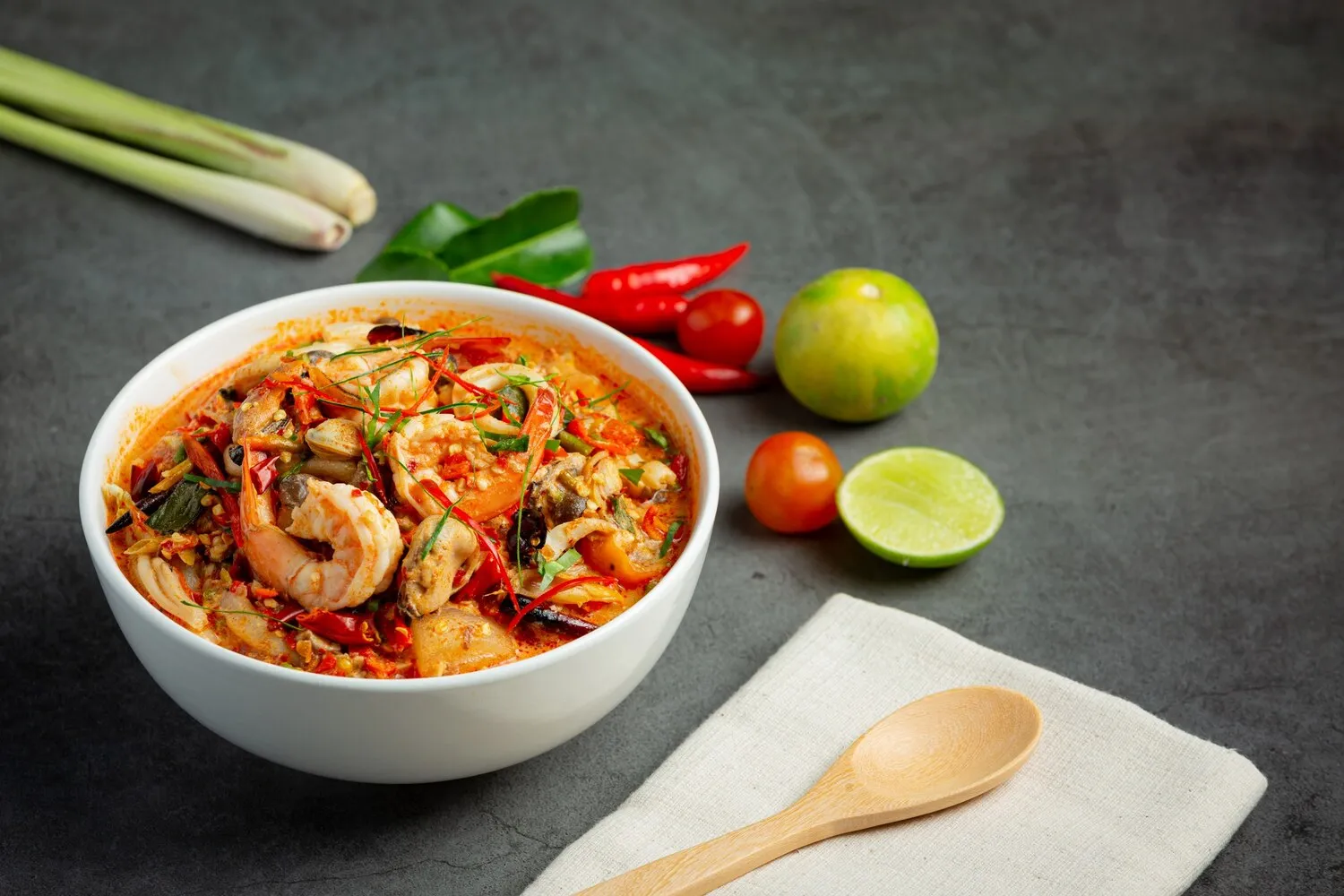
Caldos
Léo Lanches E Caldos is known for its variety of 'Caldos' (broths/soups). These are a popular choice, especially during colder months.
Nutrition Facts
* The % Daily Value (DV) tells you how much a nutrient in a serving of food contributes to a daily diet. 2,000 calories a day is used for general nutrition advice.
Brazilian caldos have roots in Portuguese cuisine, particularly caldo verde, brought over during colonization. Over time, these broths adapted to incorporate local ingredients and flavors, becoming a staple comfort food, especially popular in regions with cooler climates or during the winter months. Indigenous influences also play a role with the incorporation of local vegetables and meats. The 'Léo Lanches E Caldos' aspect points to a modern evolution, where local establishments specialize in diverse, contemporary takes on classic caldos.
Caldos are deeply ingrained in Brazilian culture as comfort food, often associated with warmth, family gatherings, and combating the chill of cooler weather. They are commonly enjoyed in the evening or late at night, particularly during the winter festivals (Festas Juninas) and in regions with cooler climates. The act of sharing a bowl of caldo is a social and comforting experience.
Social Gatherings
Caldos are frequently served at social gatherings and celebrations, fostering a sense of community and warmth. They are considered a welcoming and hospitable dish to offer guests.
Winter Comfort
During the colder months, caldos are a go-to comfort food, providing warmth and nourishment. They are often consumed as a late-night snack or light meal to ward off the chill.
Regional Variations
Different regions of Brazil have their own unique variations of caldos, reflecting local ingredients and culinary traditions. This adds to the diversity and cultural richness of the dish.
Brazilian caldos offer a diverse flavor profile, ranging from savory and hearty to subtly spicy and comforting. The flavors are defined by the base broth, which can be meat-based (beef, chicken, sausage), vegetable-based, or bean-based, combined with an array of vegetables, herbs, and spices.
The flavor profiles are heavily influenced by the ingredients. Common ingredients that define the flavors include: garlic, onions, tomatoes, peppers (malagueta, dedo-de-moça, and others for heat), cilantro, parsley, potatoes, cassava, corn, beans (black beans, kidney beans, pinto beans), and meats like shredded beef, chicken, sausage (linguiça, calabresa), or seafood. Some caldos may include cream or cheese for added richness. Specific examples include: Caldo de Feijão (bean broth), Caldo Verde (potato and collard greens broth with sausage), Caldo de Mocotó (beef feet broth), and Vaca Atolada (beef and cassava stew served as a thick soup).
Broth is Key
Start with a flavorful broth, whether it's homemade or store-bought. A good broth is the foundation of a delicious caldo. Simmering bones or vegetables for a longer period will extract more flavor.
Seasoning is Essential
Don't be afraid to experiment with different herbs and spices. Garlic, onions, parsley, cilantro, and peppers are commonly used, but other spices like cumin or paprika can add depth and complexity.
Texture Matters
Consider the texture of your caldo. Some caldos are smooth and creamy, while others are chunkier with visible pieces of vegetables and meat. Adjust the cooking time and ingredients accordingly to achieve the desired texture. Blending a portion of the caldo can create a smoother consistency.
Explore additional Soup dishes and restaurants
Explore SoupDiscover top dining spots and culinary experiences in Macaé.
Explore MacaéLearn more about the food culture, restaurant scene, and culinary heritage of Brazil.
Explore Brazil